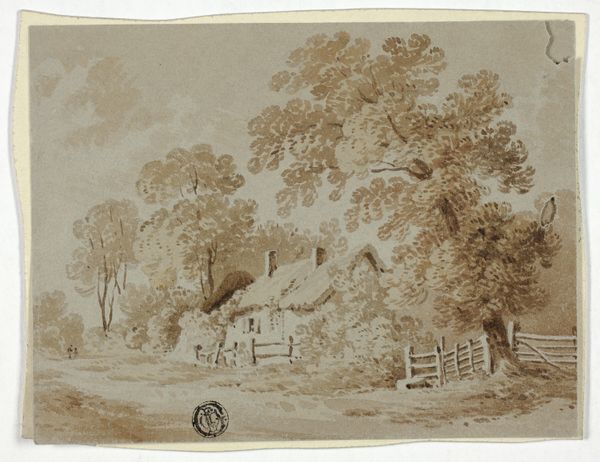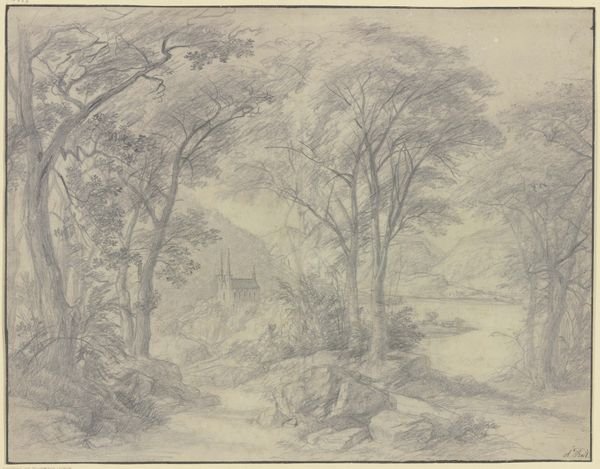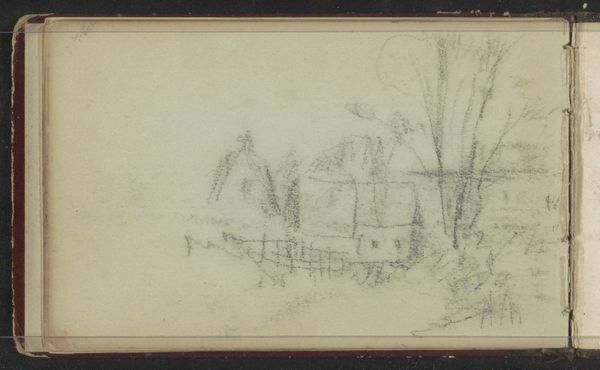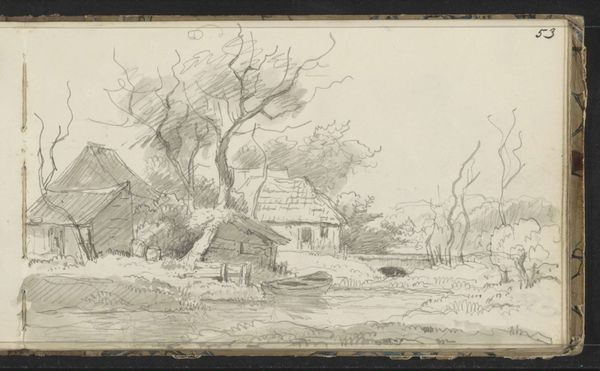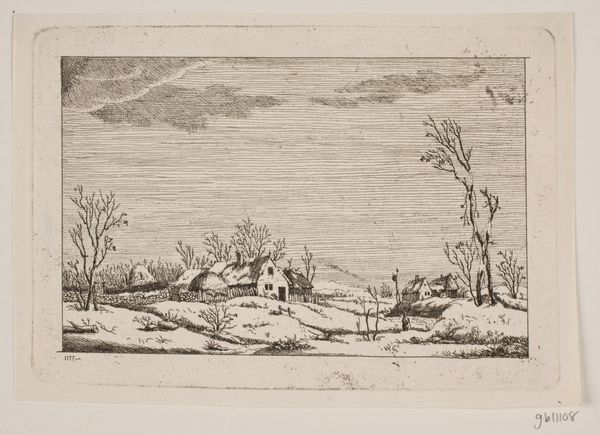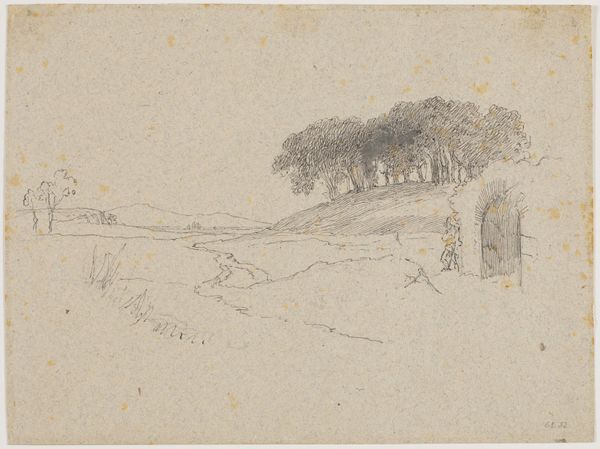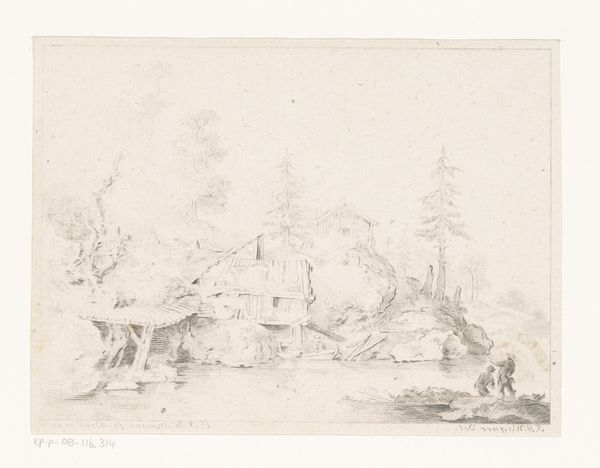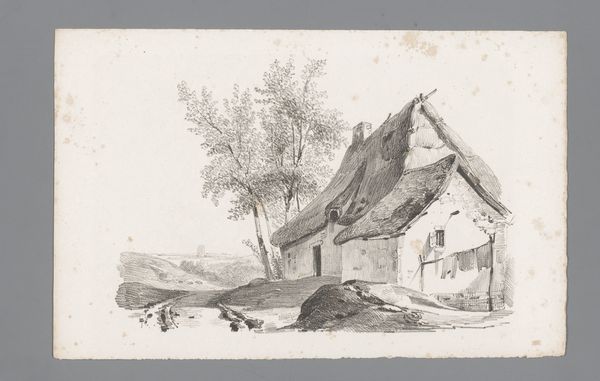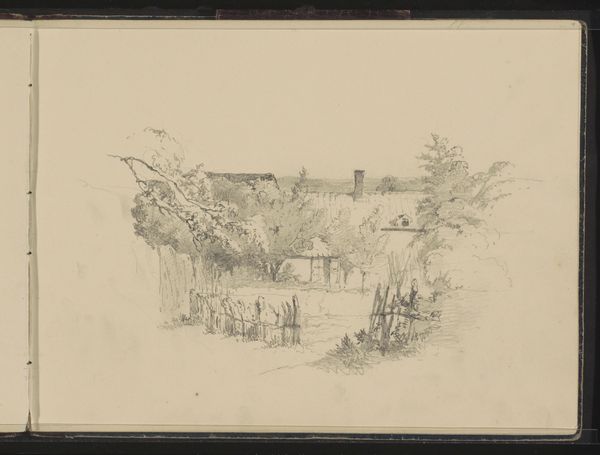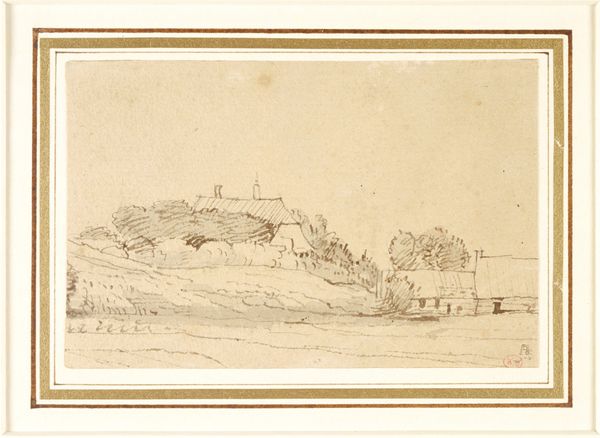
drawing, paper, pencil, graphite
#
drawing
#
pencil sketch
#
landscape
#
paper
#
coloured pencil
#
pencil
#
graphite
#
realism
Dimensions: 90 × 153 mm
Copyright: Public Domain
Curator: I’m struck immediately by the delicate rendering of this scene, almost ephemeral. It seems like a memory sketched in the faintest lines. Editor: Indeed. And when looking at Hendrik Pieter Koekkoek’s "Pepley," dating to around 1877 and currently housed at The Art Institute of Chicago, the first thing that grabs my attention is precisely this reliance on the simplest materials—pencil, graphite, and perhaps colored pencil on paper. No oil paints or vibrant pigments here; a directness of means. Curator: Absolutely, a humble yet evocative composition. It appears as though the artist is capturing the symbolic idea of “home,” a fundamental space of personal mythology rendered here in realism with landscape elements. The house on the left and its situation within the trees evoke archetypes of shelter, safety, memory. Editor: You speak of 'archetypes' and I can’t help but notice the rather unremarkable nature of that home. Its humbleness suggests not so much a space of personal mythology, as a depiction of actual labor and social standing. We could interpret the fence running alongside it and the fields around it, to consider ideas of land usage and ownership here. It also tells us of Koekkoek's method, which likely involved traveling with these lightweight materials to sketch what he witnessed. Curator: A valid point! Considering the perspective, however, doesn’t it seem deliberately designed to elicit a feeling? The soft, almost hazy details of the cottage amidst the natural elements of the countryside convey a quiet stillness that draws the viewer into a tranquil state. Even the slight undulations in the distant hills suggest an ease of mind and lack of obstruction, hinting at social narratives that valued the simple life outside urbanized experience. Editor: I’m always brought back to materiality and I must also propose that part of this ‘stillness’ stems from Koekkoek’s dependence on sketching over finished studio painting; it is not an ending but the starting point of a long and involved practice, not to mention his attention to making every mark count within that economical setting. Curator: A persuasive idea and now that I consider it, even those quick and simple markings speak to us. This brings new light to our understanding of “Pepley” and indeed the power of drawing itself to quickly generate complex and sustained emotions within a minimal landscape. Editor: Yes, exactly, a wonderful consideration for closing. Material constraints force us to hone intention, and thus deliver messages with clarity, for any viewer now and hence.
Comments
No comments
Be the first to comment and join the conversation on the ultimate creative platform.
